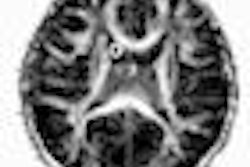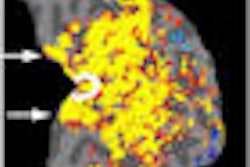BOSTON - Emergency department (ED) physicians should strongly consider MRI scans for elderly female patients who present with complaints of pelvic or hip pain, according to a presentation at this week's American Roentgen Ray Society (ARRS) meeting.
The study, presented at the ARRS conference and co-authored by Dr. Matthew Kirby from Duke University Medical Center in Durham, NC, found a 12.7% rate of fracture identification with MRI in this patient population after negative plain-film evaluation and an overall plain-film accuracy of 75.7%, excluding equivocal reads.
The sample of 94 patients included 77 women and 17 men, ranging in age from 18 to 99 years (average age, 70.4 years). All 94 patients received radiographs of the pelvis, a single hip, bilateral hips, and/or the femur within one day of their MRI study.
Two musculoskeletal-trained radiologists retrospectively reviewed in consensus 128 MRI exams of the lower extremity or pelvis ordered by the ED from July 2005 to June 2008. Thirty studies were excluded for various reasons.
Data collection
The patients also had their plain films and MRI scans reviewed and evaluated with regard to age, sex, MRI protocol, site of fracture, fracture identification, and other possible reasons for pain, as well as for any unexpected findings. Four patients received bilateral studies for a total of 98 exams.
In addition, seven patients had their plain films interpreted as possible fracture. Of those seven patients, four cases were positive for fracture on MRI, and three images were deemed negative. Eight patients who had their x-ray images interpreted as positive were subsequently found to be negative on MRI.
MRI scans referred from the hospital's emergency department were performed on either 1.5-tesla or 3.0-tesla units from Siemens Healthcare of Malvern, PA, or GE Healthcare of Chalfont St. Giles, U.K.
MRI diagnoses
In the final tabulation, MRI was able to diagnose 33 patients with a total of 63 fractures, including multiple fractures in nine patients. MRI also detected other potential etiologies of pain ranging from gluteal tendinopathy to muscle or hamstring injury in those 33 patients. MR also demonstrated four cases of metastatic disease that were not identified on radiographs.
"Thirteen patients had fractures identified by MRI only," Kirby said during his presentation. Among those patients, MRI found a total of 24 fractures -- 17 in the pelvis and seven in the hip.
The study concluded that because elderly female patients are often osteopenic and constitute the majority of patients requiring MRI after presenting at the ED, they "often present a diagnostic challenge when plain films do not detect a fracture or an equivocal interpretation is offered."
MRI's contribution
Given that MRI was more proficient at identifying hip and pelvic fractures after negative plain-film evaluation, the authors wrote that clinical management "based solely on negative plain films should be performed with caution, and MR should be strongly considered given its higher rate of fracture detection and ability to identify additional pain generators."
Kirby noted several limitations of the study, such as the fact that MR images and radiographs were not standardized in the retrospective review. "Although ours is one of the larger groups to look at this issue," he added, the sample "was under 100 patients. Since we only looked at those patients who received MRI out of the ED, there is the potential for bias."
By Wayne Forrest
AuntMinnie.com staff writer
April 29, 2009
Related Reading
Reimbursement cuts could lead to more senior hip fractures, November 20, 2008
Rate of second hip fractures high in older men and women, October 26, 2007
Hip fracture risk high among older patients with diabetes, April 10, 2007
Copyright © 2009 AuntMinnie.com



















